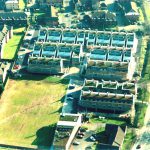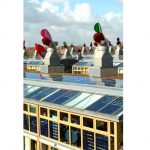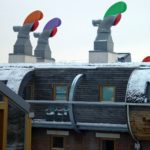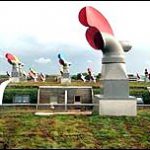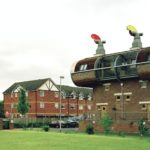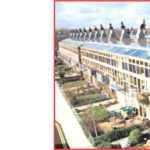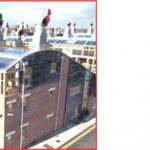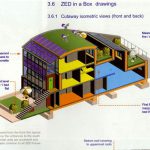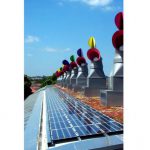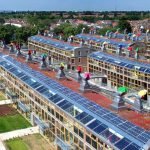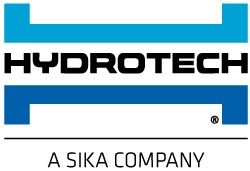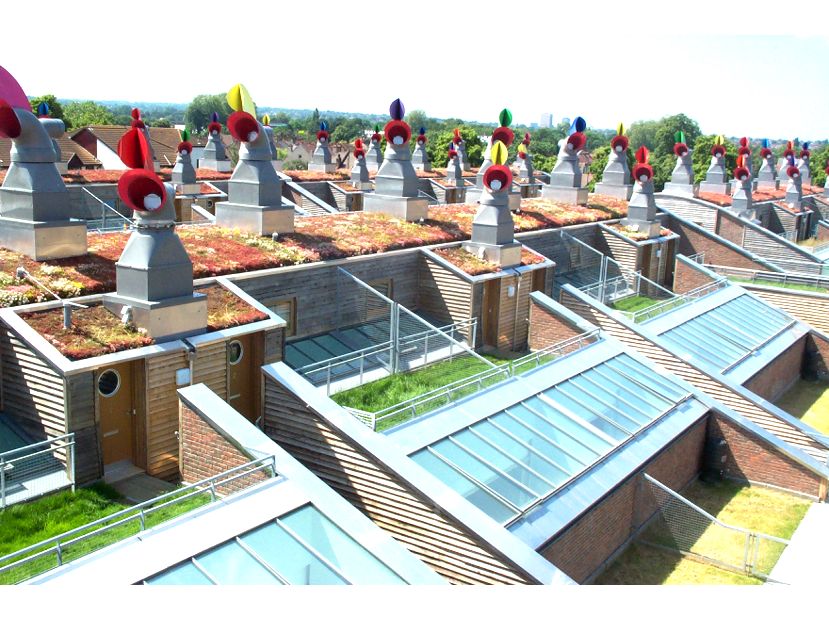
Additional Resources
Read about BedZED on the Peabody Trust website.
Case Studies
News
July 22, 2007 BedZED. redefining the way people should live by Petre Williams in Jamaica Observer.
BedZED (Beddington Zero Energy Development) is the UK’s largest eco-village, a mixed housing and work space development located in Beddington, London Borough of Sutton. Initiated by BioRegional and designed and constructed by a team of the architect Bill Dunster, BioRegional, Peabody Trust and Arup, BedZED embraces all aspects of sustainable design with 100 experimental homes, community facilities and workspace for 100 people (1600 m2 of workspace) and offers many eco-living amenities.
According to the BedZED website, “It is the first large-scale ‘carbon neutral’ community – i.e. the first not to add to the amount of carbon dioxide in the atmosphere, and is an excellent example of creative use of brownfield land…The design is to a very high standard and is used to enhance the environmental dimensions, with strong emphasis on roof gardens, sunlight, solar energy, reduction of energy consumption and waste water recycling.”
Some of the BedZED features include multicolored wind funnels, or wind cowls – which provide passive ventilation – sustainable building, materials, low energy appliances and fixtures, a residents-only car pool, and every part of the roofscape is used for passive solar, PV’s, roof gardens or extensive Sedum coir mats.
BedZED is the recipient of numerous awards and accolades, including the 2004 Civic Trust Sustainability Award in 2004; the Housing Design Awards in 2003; and the Building Energy Globe Award in 2002. BedZED was also a finalist for Office of the Deputy Prime Minister’s (ODPM) Award for sustainable communities in 2003; a finalist for the 2003 Sterling Silver Prize; and a finalist for the 2002 World Habitat Awards.
“Flat roofs have been used to provide private gardens where 300mm of soil has been covered with turf (but owners or tenants are free to grow whatever they wish). The extensive greenroof has been limited to the remaining (mainly north facing) areas. Sedum roofs are covered in semi-succulent plants that absorb rainfall and decrease the amount of rainwater that can be harvested.
The BedZED sedum roofs have an absorption capacity of 28 litres/m2. With light/moderate rainfall, all rainfall will be absorbed, whereas with heavy rain, there is run-off, but the discharge rate is halved1. If 75% of all rainfall is absorbed on the sedum, then rainwater yield is: Rooflights: 144m2 @ 770mm/year = 111m3; Sedum roof:328m2 @ 770mm/year @ 25% = 63m3; Total = 174m3. The harvesting of 174m3 or 363m3 of rainwater replaces the same volume of treated mains water.” Jennie Organ, Bioregional from Toolkit for Carbon Neutral Developments Part II Report, Personal Communications 2007
 Greenroofs.comConnecting the Planet + Living Architecture
Greenroofs.comConnecting the Planet + Living Architecture
